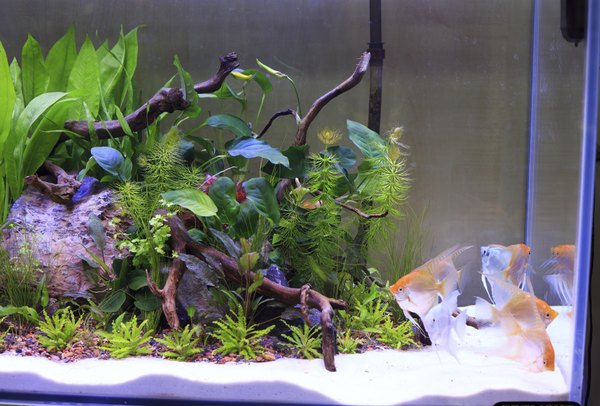 Importance Of Ideal Aquarium Water Chemistry Understanding of the water conditions required for a certain species of fish is of fundamental importance for progress. This understanding will give you the best prerequisites for rearing your specimens. Acid and Base Balance The measurent in pH is a basic estimate of whether a water sample is neutral, acidic or alkaline. It is dictated by the amount of hydrogen particles present in that sample. The pH scale is a numerical scale extending from 0 to 14, with the center being thus called the neutral pH. A water sample in the fluid state comprises emphatically charged hydrogen (H +) particles, together with charged hydroxyl (OH-) particles. The present sums of each hydroxyl or hydrogen particles make the water acidic or antacid. Through the development procedure, the fish adapted to various conditions and distinctive pH values. To maintain a sound environment inside the aquarium, you need to monitor the pH level. Temperature Fish advanced in water which is stable in temperature. Regular waterways change the temperature gradually due to the particular heat limit and all temperature changes that happen in a fast sense because cold water coming from snow or ice dissolves, or from discharge that comes from industrial plants or power plants. Fish are basically poikilothermic, which means that they are cold-blooded and cope with the temperature of their surrounding water.
Importance Of Ideal Aquarium Water Chemistry Understanding of the water conditions required for a certain species of fish is of fundamental importance for progress. This understanding will give you the best prerequisites for rearing your specimens. Acid and Base Balance The measurent in pH is a basic estimate of whether a water sample is neutral, acidic or alkaline. It is dictated by the amount of hydrogen particles present in that sample. The pH scale is a numerical scale extending from 0 to 14, with the center being thus called the neutral pH. A water sample in the fluid state comprises emphatically charged hydrogen (H +) particles, together with charged hydroxyl (OH-) particles. The present sums of each hydroxyl or hydrogen particles make the water acidic or antacid. Through the development procedure, the fish adapted to various conditions and distinctive pH values. To maintain a sound environment inside the aquarium, you need to monitor the pH level. Temperature Fish advanced in water which is stable in temperature. Regular waterways change the temperature gradually due to the particular heat limit and all temperature changes that happen in a fast sense because cold water coming from snow or ice dissolves, or from discharge that comes from industrial plants or power plants. Fish are basically poikilothermic, which means that they are cold-blooded and cope with the temperature of their surrounding water.
Getting To The Point – Events
Hardness Of Water Water is regarded by the researchers as “widely dissolvable” because many particles dissolve in it. Common water basically contains eight particles: sulfates, carbonates, chlorides, magnesium, bicarbonates, sodium, calcium and potassium in varying amounts. Other substances that close include silicates, iodine, copper, nitrate, phosphates and so on. The measures of these decomposed substances influence the hardness and the saltiness of a water.
How I Became An Expert on Fish
Dissolved Oxygen The amount of dissolved oxygen in water is affected by the level of replenishment and consumption. Utilization happens through oxidative procedures within the aquatic condition and via respiration. Replenishment happens via diffusion between the plant life and algae (many) photosynthesis and liquid-atmosphere interface. Oxygen is promptly depleted within a sample through aerobic bacterial explosions that take huge amounts of oxygen. That happens often in water samples that consist huge organic load, hence requiring a lot of aerobic bacteria to break down wastes. Carbon Dioxide Carbon dioxide is one of the few dissolved gases in water. Carbon dioxide has turned out to be progressively used in aquariums over the last couple of years being aquatic plantkeeping. The utilization of carbon dioxide to aquarium plants is very prevalent. Abundance carbon dioxide in harder water tests is typically controlled via carbonate buffers. Nevertheless, with softwater samples, there is an absence of carbonate cradles, and carbon dioxide levels may develop into risky levels for fish.